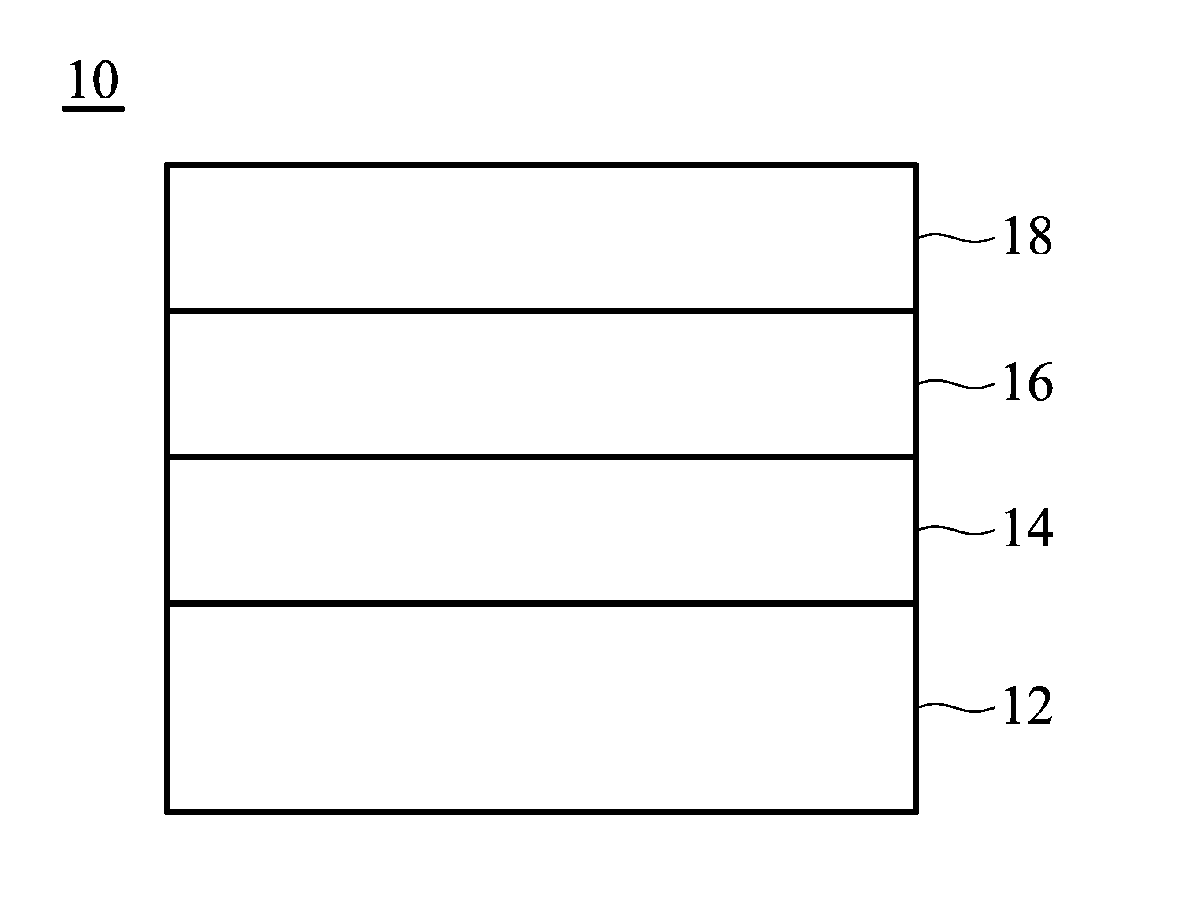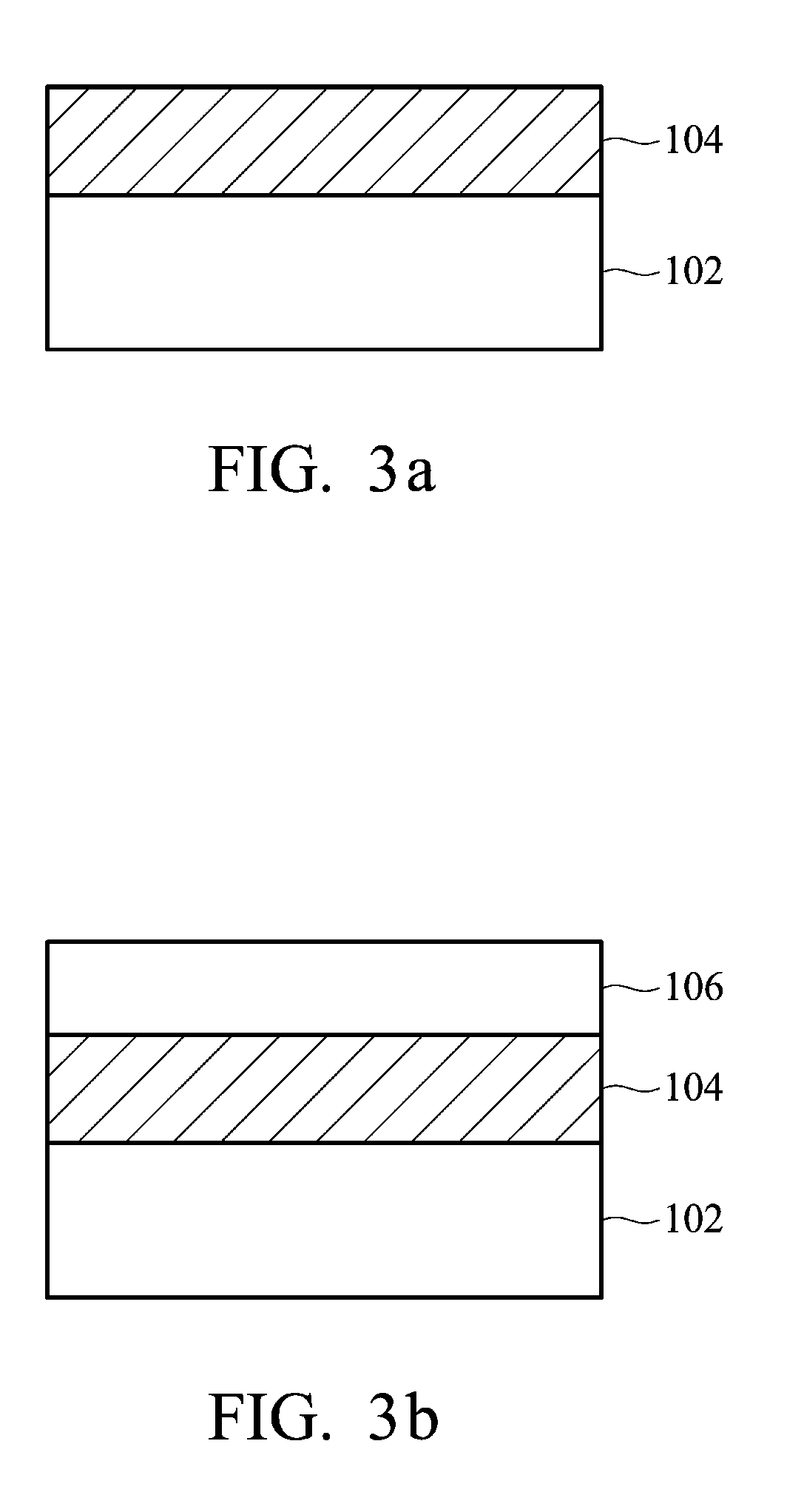Resistive random access memory and method for fabricating the same
a random access memory and resistive technology, applied in the field of resistive random access memory elements, can solve the problems of loss of endurance, resistive random access memory b>20/b> does not improve enduran
- Summary
- Abstract
- Description
- Claims
- Application Information
AI Technical Summary
Problems solved by technology
Method used
Image
Examples
example 1
[0034]A silicon substrate was provided. A TiN layer with a thickness of 50 nm serving as bottom electrode was formed on the substrate. Next, an HfO layer with a thickness of 20 nm was formed on the bottom electrode, serving as a metal oxide layer. Next, a Ti layer with a thickness of 10 nm was formed on the HfO layer. Next, a TiN layer with a thickness of 50 nm was formed on the Ti layer. Finally, the above structure was subjected to an annealing treatment, thereby forcing the oxygen atoms of the HfO to migrate into the Ti to form TiO. Thus, obtaining a RRAM element A.
[0035]The content of the oxygen atoms of the aforementioned structure was measured by an Auger Electron Spectroscopy (AES) before and after annealing, and the results are shown in FIG. 7. The content of the oxygen atoms of the HfO layer was reduced and that of the Ti layer was increased after annealing. Further, the content of the oxygen atoms of the TiN layer was almost the same before and after annealing. Therefore, ...
example 2
[0037]A silicon substrate was provided. A TiN layer with a thickness of 50 nm serving as a bottom electrode was formed on the substrate. Next, an HfO layer with a thickness of 20 nm was formed on the bottom electrode, serving as a metal oxide layer. Next, an Al layer with a thickness of 10 nm was formed on the HfO layer. Next, a TiN layer with a thickness of 50 nm was formed on the Al layer. Finally, the above structure was subjected to an annealing treatment, thereby forcing the oxygen atoms of the HfO to migrate into the Al to form the AlO layer. Thus, obtaining a RRAM element B.
PUM
| Property | Measurement | Unit |
|---|---|---|
| thickness | aaaaa | aaaaa |
| thickness | aaaaa | aaaaa |
| thickness | aaaaa | aaaaa |
Abstract
Description
Claims
Application Information
 Login to View More
Login to View More - R&D
- Intellectual Property
- Life Sciences
- Materials
- Tech Scout
- Unparalleled Data Quality
- Higher Quality Content
- 60% Fewer Hallucinations
Browse by: Latest US Patents, China's latest patents, Technical Efficacy Thesaurus, Application Domain, Technology Topic, Popular Technical Reports.
© 2025 PatSnap. All rights reserved.Legal|Privacy policy|Modern Slavery Act Transparency Statement|Sitemap|About US| Contact US: help@patsnap.com



